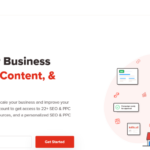In the digital age, it’s essential for businesses of all sizes to have a system in place that can track their website traffic and conversions. This is especially true for eCommerce businesses, as it allows them to understand which pages are converting best and where they can make improvements. In this article, we will guide you through the basics of conversion tracking so that you can start measuring your progress and making necessary adjustments. We’ll also cover some of the best tools out there for conversion tracking, so you can get the most out of your efforts.
What is Conversion Tracking?
There’s no denying that conversion tracking is one of the most important tools marketers have at their disposal to help them better understand how visitors are interacting with their website and convert those interactions into customers. By understanding how visitors are engaging with your site, you can make adjustments and optimizations to improve user experience and ultimately drive more conversions.
But what is conversion tracking, exactly? Simply put, conversion tracking measures the number of visits that result in a sale or other desired outcome. You can use this information to optimize your website and improve user experience (and ultimately drive more conversions). There are a few different types of conversion tracking platforms available, so it’s important to choose the one that best suits your needs.
One of the most popular options is Google Analytics. With Google Analytics, you can track both desktop and mobile traffic as well as sales from within Google AdWords or other online campaigns. You can also use Google Analytics to create custom reports that give you deep insights into your website’s performance.
However, not all websites need or want Google Analytics installed. In fact, some smaller businesses may find that their website doesn’t require too much data collection – such as visits from desktop computers only – which means they could opt for a simpler option like Clickstreamr instead. This platform provides basic visitor tracking without requiring any additional software installation or setup time.
Other popular options include Adobe Conversion Rate Booster (ACRB) and Kissmet
A Basic Implementation of Conversion Tracking
Conversion tracking is the process of identifying and measuring the actions that result in a conversion, such as a purchase or signing up for a mailing list. By understanding which steps lead to conversions, you can improve your website’s user experience and increase sales.
To start conversion tracking, first create an account with a Conversion Tracking Service (CTS). There are many CTSs available, but we recommend Google Analytics because it’s free and widely used. Once you have an account, add your website’s URL to your CTS account. After your website is added, go to the “Conversions” tab and set up a conversion action:
1. Choose a goal type. You can track conversions for web Visitors, email Subscribers, or sign-ups for a mailing list.
2. Choose how you want users to be tracked: cookies or form data.
3. Set up the conversion action details: what page they visited on your website, what button they clicked on, and what kind of device they were using when they made the conversion.
4. Specify how long the tracking data will be kept for (in days).
5. Review your results and make any necessary adjustments!
Implementing Custom Campaigns and Funnels
Custom campaigns and funnels can help you to convert visitors into customers.
Custom campaigns let you track the progress of individual visitors across different stages of your conversion funnel, while funnels let you sequence your content and marketing interventions to help drive conversions.
By understanding how each stage of the conversion funnel works and integrating custom campaigns and funnels into your overall marketing strategy, you can increase your conversion rate and build a more successful business.
Troubleshooting Issues with your Conversion Tracking System
If you’re having trouble converting your visitors into customers, there are a few things you can do to troubleshoot the issue.
First, make sure your website is optimized for conversion. This means making sure your landing page is well designed and easy to understand, and that you include clear call-to-action buttons that lead visitors straight to purchasing your product or service.
Second, make sure you have accurate conversion tracking setup on your website. This will allow you to track the number of visitors who complete a given action (like signing up for an email list), as well as how many of them actually convert into paying customers.
Finally, be patient—sometimes it takes a little work to get conversions going, but once they start happening regularly they will snowball leading to even more business growth!
How to Set Up Conversion Tracking
When you want to measure the success of your website’s conversion rate, you need to set up conversion tracking. Conversion tracking is a way to track how many visitors on your website convert into customers. The process of setting up conversion tracking can be a bit tedious, but it’s well worth the effort. Here are four tips for getting started:
1. Choose Your Tracking Method
There are several different ways to track conversions on your website: cookies, pixel tags, web beacons and Flash cookies. Each method has its own advantages and disadvantages. To make sure that your conversions are accurate, choose the method that best suits your site and business strategy.
2. Set Up Cookie Tracking
Cookies are the most commonly used conversion tracking mechanism on the web. They work by storing a small piece of information on a visitor’s computer (usually in the form of a text file). When the visitor completes an action on your website – such as filling out a form or buying something – their browser sends this information along with their request to the server.
The cookie contains information about the visitor’s browsing history (i.e., which pages they have visited on your site), their IP address and the time stamp of their visit. This information helps you track and analyze how people use your website.
To set up cookie tracking, you first need to create a Cookie Policy page. This page will describe exactly what cookies will be
How to Track Conversions
1. Set up your Google Analytics account and create a conversion tracking code. This will allow you to track how many people click on your website’s banner ads or visit specific pages, and then convert those visitors into customers.
2. Use the “tracking code” to add conversion tracking pixels to your web pages. These small icons will show up in your visitor’s web browser’s analytics reports, allowing you to track how many people click on them and then convert those clicks into sales.
3. Use Google Analytics’ “Customers” report to see which pages are driving the most conversions. Find out what content is most appealing to potential buyers, and make sure to prominently showcase it on your website.
4. Take advantage of other Google Analytics features that can help you measure customer engagement and determine whether they’re likely to become customers down the line. For example, use “events” reports to see when customers join your email list or download a white paper, and use “audience insights” reports to learn more about who your current customers are and where they come from
Types of Conversion Tracking
There are three main types of conversion tracking: Banner, Session, and Custom.
Banner Conversion Tracking is the simplest form of conversion tracking. When a visitor clicks on a banner ad or an email opt-in form, your web site can track that action as a conversion. There’s not much you need to do to set this up; most popular web hosting companies offer banner conversion tracking by default.
Session Tracking is similar to banner conversion tracking, but it keeps track of the entire browsing session. This means that if a visitor lands on your site via a search engine result page (SERP), visits one of your pages, then leaves without converting, you’ll still be able to measure how many conversions occurred during that visit.
Custom Conversion Tracking lets you tailor the conversion experience based on what kind of visitor it is. You can set up custom landing pages for different types of visitors (like lead gen forms for marketing automation software), and track which elements of those pages encourage conversions (like pop-ups or CTAs). This type of tracking can be especially helpful for high-traffic sites with lots of variations in the way visitors arrive and interact with your site.
Asuring Your Success with Conversion Tracking
Conversion tracking is an essential part of any marketing campaign, and it can determine the success or failure of your website. Conversion tracking helps you measure how many visitors sign up for your email list, make a purchase, or fill out a contact form. With conversion tracking, you can optimize your campaigns to increase conversion rates and improve your overall traffic.
There are a few different types of conversion tracking that you may use on your website. The most common type is called “goal management” where you set specific goals for each visitor channel. For example, if you want to increase the number of email subscribers, you would set a goal for signing up new subscribers through email marketing.
Another type of conversion tracking is “pageview attribution” which calculates the percentage of visitors who view each page on your website before converting. This information can help you identify which pages are performing well and which need more attention..
Both goal management and pageview attribution require coding on your website, so be sure to consult with an experienced web developer if you want to implement these features. You can also use third-party conversion tracking services like Google Analytics or CrazyEgg to track conversions without any programming required..
Overall, there are many different factors that influence the success of a conversion campaign. By using effective conversion tracking techniques on your website, you can ensure that all of these factors are taken into account and that your campaign is optimized for maximum efficiency..
Conclusion
Congratulations on growing your website! Tracking the conversion rate of your visitors can be a valuable way to optimize and grow your website. In this article, we will outline how you can set up conversion tracking on your website using Google Analytics and then show you how to track conversions through Google Ads. By following these simple steps, you will be able to better understand the reasons why people visit your site and learn which advertising campaigns are most successful at converting potential customers into paying customers. Thanks for reading!
How to Install and Use Conversion Tracking
When you want to track conversions on your website or blog, there are a few things you need to do. Firstly, create a conversion tracking code snippet. Secondly, add it to your website or blog’s header. Finally, create an account with Google Analytics and activate tracking for your conversion events.
Now that you have all of the necessary components in place, let’s discuss how to set them up.
To begin with, you’ll need a conversion tracking code snippet. This can be created using a tool such as Google Webmaster Tools (Gwt) or Code Snippets Manager (Csm). Once you have the code snippet saved, you’ll need to add it to your website or blog’s header. The easiest way to do this is to add an tag and paste in the code snippet.









